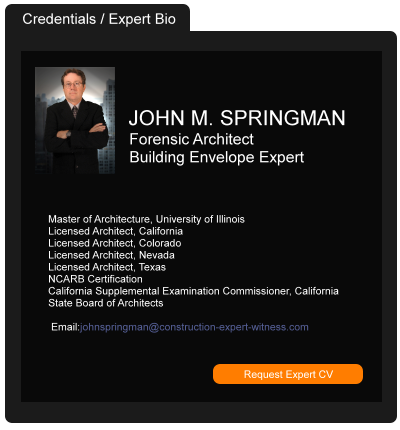The Looming Housing Crisis and Limited Government Relief—An Examination of the CDC Eviction Moratorium Two Months In
December 14, 2020 —
Zachary Kessler - Gravel2GavelMonths after the Centers for Disease Control and Prevention (CDC) issued a nationwide eviction moratorium using its emergency pandemic powers under the Public Health Service Act, the efficacy of this unprecedented measure remains unclear. While the Order ostensibly protects tenants facing homelessness or housing insecurity due to the financial impacts of the COVID-19 pandemic through the end of 2020, legal challenges have been initiated in Ohio and Georgia, with additional lawsuits appearing likely. Further, even barring legal challenges, courts have not handled these cases in a uniform manner. With lawmakers unable to reach any stimulus or COVID-19 relief agreement before the election, the CDC Order appears likely to remain the only federal eviction moratorium through its expiration on December 31, 2020.
Since the Order’s enactment, the CDC has since released new guidance, answering some of the open questions not covered by the initial Order. This guidance, while non-binding, is largely more favorable to landlords and property management companies than the initial text of the Order, as it provides that landlords are not required to make tenants aware of the Order’s protections and may challenge the truthfulness of the tenants’ declarations in any state or municipal court. The guidance also clarified the potential criminal penalties for violating the Order and the criminal penalties for perjury for bad faith submissions of the requisite declaration by tenants.
Read the court decisionRead the full story...Reprinted courtesy of
Zachary Kessler, PillsburyMr. Kessler may be contacted at
zachary.kessler@pillsburylaw.com
Plaintiffs Not Barred from Proving Causation in Slip and Fall Case, Even With No Witnesses and No Memory of Fall Itself
February 01, 2022 —
David Hoynacki, Arezoo Jamshidi & Lawrence S. Zucker II - Haight Brown & Bonesteel LLPOn January 19, 2022, the California Court of Appeal, Second Appellate District (Los Angeles), held that a plaintiff is not barred as a matter of law from proving causation in a slip and fall case if there were no witnesses to the fall, and the plaintiff does not remember the fall itself. The Court of Appeal stated specifically that circumstantial evidence would permit a jury to make a “reasonable and probable inference” regarding contributing factors to a fall, even with no eye-witness evidence.
In
Kaney v. Mazza (BC619247, Jan. 19, 2022), plaintiff and appellant Lydia Kaney (Kaney), was visiting her sister in her rented home in September of 2014. At some point during the visit, the light in the bathroom at the top of the stairs stopped working—Kaney used the stairs, and fell. Kaney filed suit against her sister and the owner of the home alleging premises liability, negligence, and violation of the Americans with Disabilities Act (ADA). In her deposition, Kaney testified that she remembered going up to the bathroom, and then waking up on the floor in pain. She could not remember how she fell; she did not know if she had missed a step, or if she had slipped and fallen backwards. She speculated that a worn-out bath mat may have been the cause of the slip and fall because the rubber traction on the bath mat was worn away.
Reprinted courtesy of
David Hoynacki, Haight Brown & Bonesteel LLP,
Arezoo Jamshidi, Haight Brown & Bonesteel LLP and
Lawrence S. Zucker II, Haight Brown & Bonesteel LLP
Mr. Hoynacki may be contacted at dhoynacki@hbblaw.com
Ms. Jamshidi may be contacted at ajamshidi@hbblaw.com
Mr. Zucker may be contacted at lzucker@hbblaw.com
Read the court decisionRead the full story...Reprinted courtesy of
The Importance of Preliminary Notices on Private Works Projects
September 03, 2019 —
William L. Porter - Porter Law GroupTime and time again I receive calls from subcontractors and suppliers who find themselves faced with a customer who is either unwilling or unable to pay for labor or materials supplied for a private works project. As an attorney, the first question I usually ask is “did you serve a Preliminary Notice?” The second question I usually ask is “did you serve the Notice within twenty (20) days after first furnishing labor, service, equipment or materials to the job site?” The answers to these questions will often determine the ability to collect on the claim.
The excuses for failing to serve the Preliminary Notice range from “for the last ten years the customer has always paid on time” to “I didn’t want to imply the contractor was not going to pay me” to “it is too much trouble to do on every job” or, simply, “I forgot”. Contractors and suppliers are well advised that any subcontractor or supplier who fails to properly and timely serve a Preliminary Notice is depriving itself of the most powerful tool available for compelling payment of construction related debt on a private works project. For all but the smallest contracts failure to serve the Preliminary Notice is also a violation of contractors’ license law and constitutes grounds for discipline by the Contractor State License Board, up to and including suspension of the contractor’s license.
Most of these rules are found in California Civil Code Section 8200-8216. The requirements of these sections are far too numerous to itemize here. Suffice it to say every contractor, subcontractor and construction material supplier to private construction projects should be familiar with these sections of the California Civil Code. They set forth most of the rules which relate to Preliminary Notices on private construction projects. Some of the most important features are as follows:
Read the court decisionRead the full story...Reprinted courtesy of
William L. Porter, Porter Law GroupMr. Porter may be contacted at
bporter@porterlaw.com
Foreign Entry into the United States Construction, Infrastructure and PPP Markets
September 11, 2023 —
Robert A. James - Gravel2Gavel Construction & Real Estate Law BlogTwo major forces are combining to create extraordinary opportunities for infrastructure project participants in the United States. One is the long pent-up demand for overhaul of the nation’s roads, ports, dams and other civil works. The American Society of Civil Engineers (ASCE) routinely
awards “C-” or worse grades for the status and safety of the country’s backbone facilities. The lack of prior investment is apparent to anyone who uses public transit in the U.S. and then uses similar conveniences in major cities around the globe.
The other is the set of political incentives laid down by recent legislation including the Infrastructure Investment and Jobs Act and the Inflation Reduction Act, which have authorized over $1 trillion for programs, many of which call for new and expanded facilities. According to the 2023 U.S. Construction Industry Databook Report, the national construction market is expected to record a compound annual growth rate of 5.2% during 2023 – 2027, and the aggregate output is expected to reach $1.7 trillion by 2027.
Read the court decisionRead the full story...Reprinted courtesy of
Robert A. James, PillsburyMr. James may be contacted at
rob.james@pillsburylaw.com
Top 10 OSHA Violations For The Construction Industry In 2023
February 26, 2024 —
Dominic Donato & Jeff Miragliotta - Kahana FeldEvery year, the Occupational Safety and Health Administration (OSHA) publishes their top violations in the construction industry. And typically, the most common violations are consistent year after year. What separates 2023 is the number of citations involving Fall Protection, Scaffolding, Ladders, and the failure to use personal protective equipment (PPE) or other life safety equipment (LSE). The following is the list of the Top Ten OSHA violations for 2023:
(10) Toxic and Hazardous Substances. There were 382 citations issued for “hazardous communication” and improper warnings issued to construction employees.
(9) Excavations. There were 395 citations issued for failure to provide proper and specific excavation requirements and instructions.
(8) Scaffolding – Aerial Lifts. There were 481 citations issued for improper lifting equipment and supports for building scaffolding.
Reprinted courtesy of
Dominic Donato, Kahana Feld and
Jeff Miragliotta, Kahana Feld
Mr. Donato may be contacted at ddonato@kahanafeld.com
Mr. Miragliotta may be contacted at jmiragliotta@kahanafeld.com
Read the court decisionRead the full story...Reprinted courtesy of
Repairs to Hurricane-damaged Sanibel Causeway Completed in 105 Days
February 12, 2024 —
Marigo Farr - Engineering News-RecordPermanent repairs to the roadway portion of the Sanibel Causeway are substantially complete one year and four months after more than 6,000 Sanibel Island residents lost access to the mainland in the wake of Hurricane Ian. The Superior Construction and The De Moya Group joint-venture team, responsible for the work, say that all travel lanes are now permanently open to the island off Florida's southwest coast near Fort Myers.
Reprinted courtesy of
Marigo Farr, Engineering News-Record
ENR may be contacted at enr@enr.com
Read the full story... Read the court decisionRead the full story...Reprinted courtesy of
Parol Evidence can be Used to Defeat Fraudulent Lien
March 27, 2019 —
David Adelstein - Florida Construction Legal UpdatesParol or extrinsic evidence can be used to defeat an argument that a lien is a fraudulent lien. And, just because a lien amount exceeds the total contract amount does not presumptively mean the lien is willfully exaggerated or recorded in bad faith. Finally, a ruling invalidating a construction lien can create the irreparable harm required to support a petition for writ of certiorari. All of these issues are important when dealing with and defending against a fraudulent lien and are explained in a recent case involving a dispute between an electrical subcontractor and its supplier.
In Farrey’s Wholesale Hardware Co., Inc. v. Coltin Electrical Services, LLC, 44 Fla.L.Weekly D130a (Fla. 2d DCA 2019), there were various revisions to the supplier’s initial purchase order, both from a qualitative and quantitative perspective, and a ninth-revised purchaser order was issued and accepted. The electrical subcontractor claimed that deliveries were late, unassembled, and did not include the required marking (likely the UL marking), to pass building inspections. As a result, the subcontractor withheld money from the supplier and the supplier recorded a lien in the amount of $853,773.16 and filed a foreclosure lawsuit.
Read the court decisionRead the full story...Reprinted courtesy of
David Adelstein, Kirwin NorrisMr. Adelstein may be contacted at
dma@kirwinnorris.com
West Coast Casualty’s Quarter Century of Service
May 03, 2018 —
Beverley BevenFlorez-CDJ STAFFWest Coast Casualty's Construction Defect Seminar has been promoting charitable work for the past twenty-five years. Each year, they promote different charities, and provide multiple ways for individuals and companies to contribute. Whether it’s Buy a Banner, Tennis Shoe Thursday, or Flip Flop Friday, industry members are given opportunities to support worthwhile causes.
This year, West Coast Casualty is supporting
Hawaii’s Children’s Cancer Foundation ,
St. Jude Children’s Research Hospital, and
Shriners Hospital for Children.
WCC also supports charitable organizations through every award that they present each year. Donations are made in the winner’s name: For Jerrold S. Oliver Award of Excellence awardees,
Habitat for Humanity as well as a local California and Nevada charity; For Legend of an Era Award, the designated charity of West Coast Casualty’s Construction Defect Seminar; and for The Larry Syhre Commitment to Service Award, a donation to The Larry Syhre Foundation.
Read the court decisionRead the full story...Reprinted courtesy of

































































